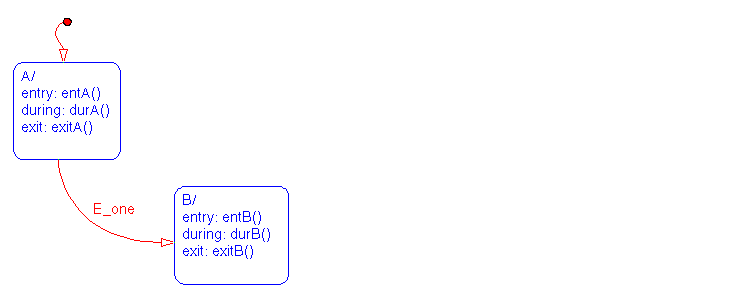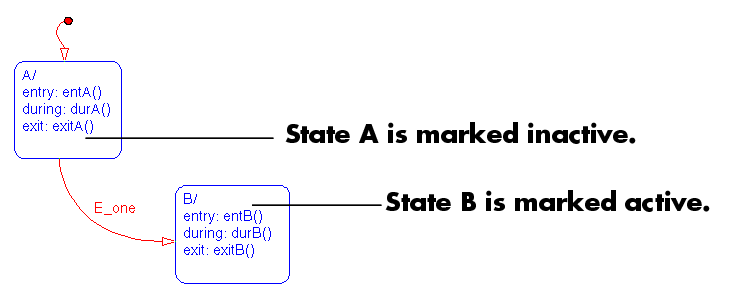

| Stateflow |   |
Semantics of Active and Inactive States
This example shows the semantics of active and inactive states
 .
.
Initially the Stateflow diagram is asleep and both states are inactive. An event occurs and the Stateflow diagram is awakened. This is the semantic sequence:
A is detected.
A is marked active.
A entry actions execute and complete (entA()).
Event E_one occurs and the Stateflow diagram is awakened. State A is active. This is the semantic sequence:
E_one. A valid transition is detected from state A to state B.
A exit actions execute and complete (exitA()).
A is marked inactive.
B is marked active.
B entry actions execute and complete (entB()).

 | Event-Driven Effects on Semantics | Semantics of State Actions |  |